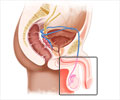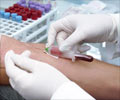Highlights
- A saliva test matches the performance of a blood test which is used to assess hepatitis E virus (HEV) infection.
- The test could be a less expensive alternative tool for data collection used to study about the disease.
- Research in Hepatitis E is essential as there are disease outbreaks in areas with poor sanitation and water contamination.
Yet periodic outbreaks occur in places like India, Pakistan, Nepal, Bangladesh, and regions of Africa, where poor sanitation and water quality problems can infect hundreds of thousands of people at a time through a fecal-oral route.
"Tracking outbreaks and reducing HEV infection rates have been limited by difficulties in timely diagnosis," says Heaney. An easier diagnostic method could have substantial yields in terms of research to test the success of preventative interventions.
How Does HEV Infection Spread?
The symptoms are mild such as fever, diarrhea, headache and so the infection remains subtle. This makes it hard to identify the sources of outbreaks and prevent them. Pregnant women are especially vulnerable, with up to 30 percent dying after becoming infected through a mechanism that's currently not understood by researchers.
The current gold standard for diagnosing hepatitis E is a blood test that uses a common diagnostic platform known as ELISA (enzyme-linked immunosorbent assay), which looks for antibodies to a disease with antigens typically attached to a solid surface.
To address these challenges, Heaney and his colleagues developed a new hepatitis E test that uses saliva rather than blood or stool.
Saliva Test
The research team's new saliva test uses a different platform in which antigens are attached to fluorescent beads. These beads can circulate more easily through a liquid, potentially encountering more antibodies to a disease if they're present in saliva.
Another advantage with this bead-based technology is that it allows for testing of a number of different antigen targets within the same saliva sample. So eventually one could test for multiple different infections in a single saliva sample.
Comparing Saliva Test With ELISA
To determine how their saliva test for hepatitis E compares to the more commonly used blood test, the Hopkins researchers worked with colleagues at a clinical diagnostics center in Dhaka, Bangladesh, where patients are often referred for testing for hepatitis E and other diseases.
Colleagues there recruited 141 patients who provided both blood and saliva samples; 76 were referred to the center because of symptoms of acute viral hepatitis, and 65 were referred for reasons unrelated to acute viral hepatitis.
The blood ELISA test showed that 50 patients from the symptomatic group had evidence of a past HEV infection and 17 had evidence of a recent HEV infection. It also showed that 28 from the group with no hepatitis E symptoms had past HEV infection and two showed evidence of recent HEV infection. The saliva test nearly matched these results, with two discrepant results for past infection and four for recent infection.
The saliva test also scored high as far as sensitivity and specificity, important indicators of a test's accuracy. For past infection, sensitivity and specificity for the saliva test were 98.7 percent and 98.4 percent respectively, and for recent infection, sensitivity and specificity were 89.5 percent and 98.3 percent respectively.
Study participants also filled out surveys that asked whether they preferred providing samples of saliva or blood for testing. Unsurprisingly, an overwhelming majority responded that they preferred to submit saliva.
Besides patient preference, saliva also has the benefit of potentially simplifying hepatitis E testing in the field. Blood samples have many requirements that saliva samples don't, such as personnel specially trained for collection, the need to protect samples from heat, and sanitary disposal of needles.
"A simple and accurate saliva test would address a lot of these challenges," Heaney says. Their current hepatitis E saliva test still involves equipment that's impractical to use in the field. Heaney and his colleagues plan to create versions of this test using more portable devices that can be used more easily to assess individuals where outbreaks happen in the field.
Reference
- Christopher D. Heaney et al., Saliva as good as blood for diagnosing hepatitis E, study suggests, Journal of Immunological Methods (2017).
Source-Medindia
















